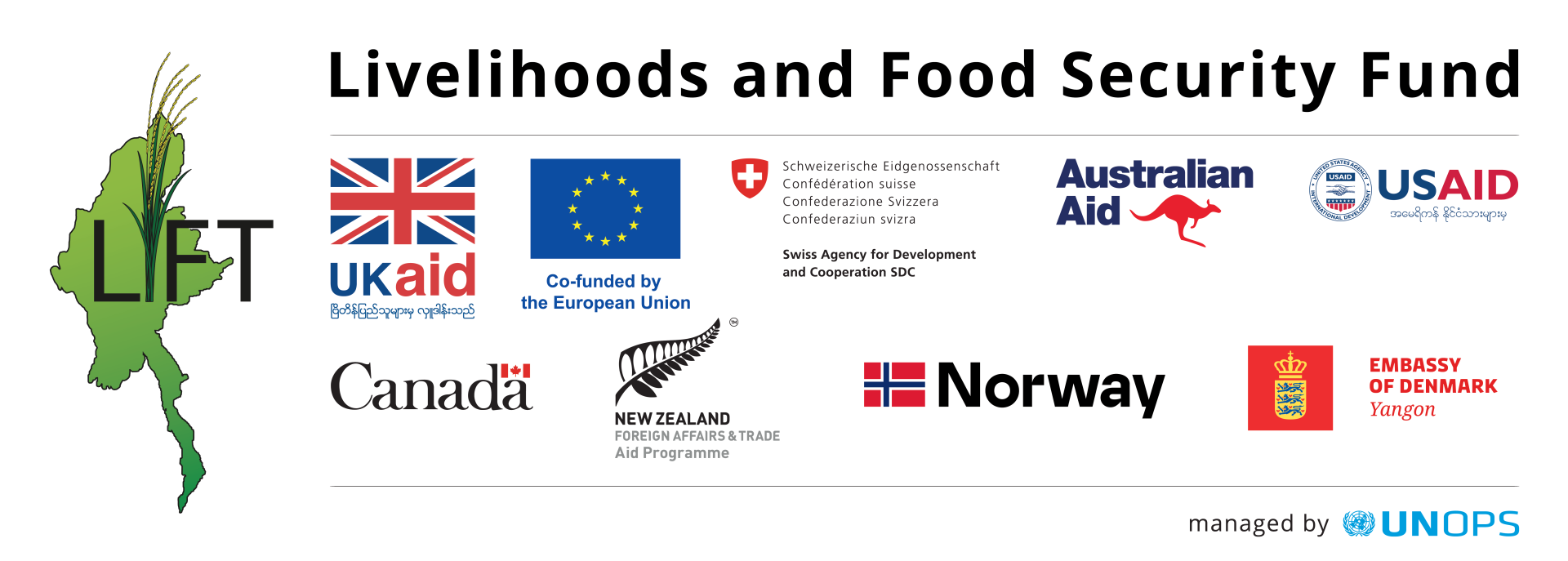
LIFT’s impact on the incomes, nutrition and resilience of rural people in Myanmar continues to grow, according to the LIFT Annual Report 2016, published online today.
Myanmar’s rural economy is modernising and growing. LIFT’s 2016 results are evidence that LIFT’s support in this changing environment is impacting on increasing famers’ profits, encouraging diversification in agriculture and skilling people for new jobs with higher wages.
LIFT support, amounting to USD 266 million, has reached 7.2 million rural people, around 20 per cent of the country’s rural population.
In 2016, LIFT worked in 222 townships, which is more than double the number of townships at the end of 2015. This growth was mainly driven by LIFT’s investment in jump-starting the microfinance capital market, resulting in expanded reach of microfinance institutions.
LIFT met or exceeded its targets for 24 of the 27 outcome indicators for which data was collected in 2016.
Some highlights:
- 2.2 million people living in rural households have increased incomes
- 2.3 million people are living in households with increased assets
- around 2 million people have strengthened resilience, meaning they have better capacity to manage and move on from shocks and setbacks
- more than 1.6 million people are served by microfinance institutions and 94 per cent of them are women
There are many factors at work in Myanmar’s structural transformation that are contributing to changes for people in rural areas. In 2016, mechanisation, microfinance and migration had significant impact on the rural population in Myanmar across the four geographic areas where LIFT works.
LIFT started new activities in the Delta, Dry Zone, Rakhine and Uplands geographic areas, as well as for financial inclusion, migration and civil society engagement programmes in 2016. LIFT was also able to expand into conflict-affected areas of Kayin, Kayah and Tanintahryi with new partners and new stakeholders.
LIFT continues to engage with government policy across its programmes and in 2016 supported government efforts relating to land policy, elderly pensions, agriculture policy, nutrition and gender.
In the area of nutrition, LIFT introduced major new initiatives in 2016 to reduce stunting in the under-five age group, including maternal and child cash transfers and nutrition social behaviour change communications.
These programmes put the LIFT strategy 2014-2018 into operation, by helping target beneficiary groups to ‘step up’ into commercial value chains, ‘step out’ of marginalised farming and into more profitable agricultural and non-farm support jobs, and to ‘hang in’, gaining better nutrition and skills that will enable them to later ‘step up’ or ‘step out’.
LIFT thanks its partners for delivering strong results that are improving the lives of millions of people.
The highlights in English and Myanmar are available here. The full reports can be downloadable here.


